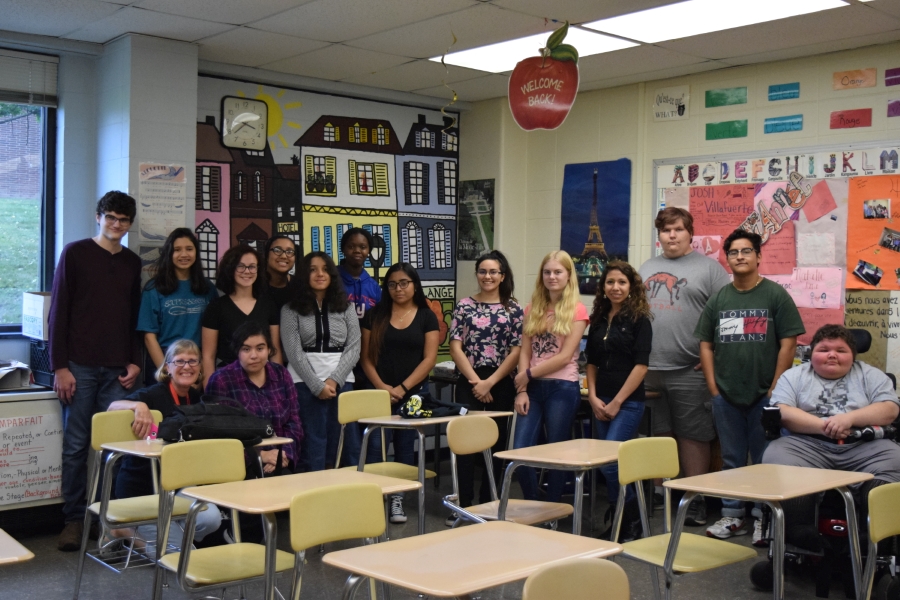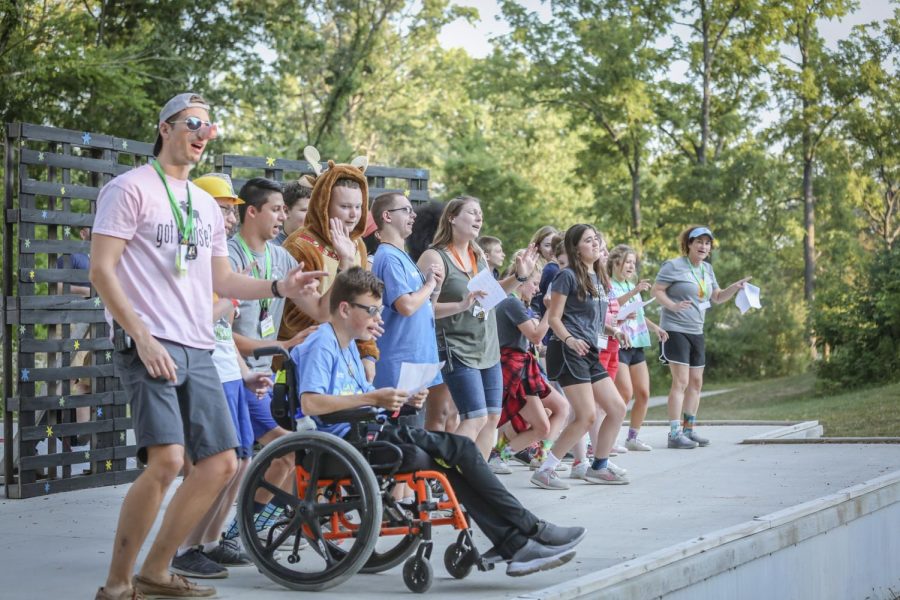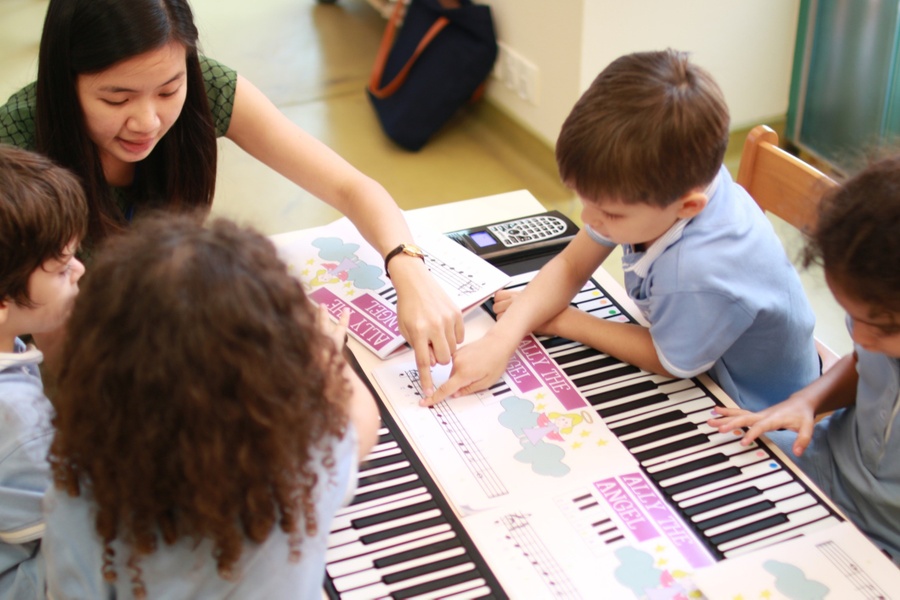If you’re studying education, there’s one decision you will ultimately have to make that will have a bigger impact on your career than almost any other: what kind of institution do you want to work in?
Elementary-level education is a specialism all of its own, and, of course, some people choose not to work in educational institutions at all, but to enter into administrative positions elsewhere in the system or remain in academia to conduct research. Most education graduates, however, end up either in high schools or universities. In order to decide which of these would best suit you, you need to appreciate the differences in how they are run.
A little early history
To understand the difference between high school and university systems, it’s important to know something about their origins in the US. One factor stands out ahead of all the others: the nation’s first universities were founded as prestige projects, intended to help the new country prove itself as capable as any in Europe, while its first schools for children developed in a haphazard and almost accidental way, drawing on a variety of different traditions and with very little oversight.
Initially, they were only for young or privileged children, with the majority entering the workforce at around the age of 10. It wasn’t until the mid-1800s that efforts were made to get all children to attend school (though education for Native people and African Americans lagged behind), and it would be another 100 years before every state accepted that this should apply up until the age of 18.
Despite being better organized, college education was initially available to very few people. It wasn’t until after World War Two, when traditional ideas about class began to crumble as a result of men from different backgrounds serving side by side, that average people saw college as something that they could realistically aim for, and colleges began expanding their offerings and facilities to accommodate them.
Funding
Early universities in the US were entirely privately funded, with the University of Georgia in Athens the first to receive state funding in 1785. The federal government has only really been involved in funding postsecondary education in relation to specific research projects, or through the provision of stimulus packages to help them overcome specific economic challenges such as the COVID-19 pandemic.
State universities have to follow state rules and private institutions generally give the impression of being more independent, because they are theoretically free to set their own. However, in practice they often struggle to generate sufficient income from fees alone, so rely on keeping a small number of wealthy donors happy. Donations are often connected with pressure to adopt particular policy directions. Still more worrying from an ethical perspective is the pressure that can be applied to give donors’ family members an easy ride through their student careers. Therefore, decision makers and administrative teams need to be careful to protect their institutions from corruption.
Although state-run high schools do not suffer from this kind of pressure, it can affect private schools and, to an extent, charter schools. Where federal funding is involved, however, the conditions that go along with it tend to protect schools from becoming too severely compromised, and make it easier for educators to focus on what they genuinely think will be best for all their students.
Student selection
State schools have to find a place for every child who needs one, while charter schools and private schools are able to be a bit more selective (as long as they avoid falling foul of discrimination laws). Universities, however, have still more freedom. They have much wider catchment areas, being able to take students from anywhere in the country. They can also take on foreign students who travel there expressly for the purpose of study. Affirmative action, aimed at helping larger numbers of students from disadvantaged backgrounds to access college education, is banned in nine states but continues to be practiced elsewhere after winning partial support from the Supreme Court in 2003 (Grutter v. Bollinger). However, this aside, colleges are free to base admissions purely on merit.
As a consequence of this, colleges are able to focus their educational efforts on a section of the population with above average ability, which generally excludes lazy or disinterested students. This enables them to get away with a one-size-fits-all approach to teaching much more successfully than high schools can. In a high school, there is a responsibility to cater to students with very different levels of ability, including those with serious cognitive impairments. This requires a greater level of adaptability and an approach that is more focused on individuals. While there is a risk that the very brightest students, along with those who struggle most, will miss out in a system that tries to cater to everybody, there are advantages for students because they are able to socialize in a community more representative of the general population. Students also have the potential to improve their communication skills and their respect for people who are different from them.
Student motivation
No matter how enthusiastic you are about education, you have to acknowledge, when running a school, that not all of your students want to be there – they are simply compelled to be. By contrast, while there are people who go to college primarily to please their families, the vast majority are there because they want to be (those who are not generally just skip classes). This makes a big difference in how you need to think about motivating your students and dealing with absences.
Furthermore, where high school students don’t expect to get into college and don’t need good grades to pursue their career ambitions, they are often not inclined to work very hard. College students know that a good final grade is necessary if they are to distinguish themselves from others who have made it that far, so they are more likely to apply themselves in class and actually complete their homework. There are distractions in both cases, of course, but as students get older, they generally develop a better understanding of the need to balance having fun with making sure that they still achieve their academic potential.
Setting the curriculum
Although colleges support the principle of universal education by delivering a core curriculum for first-year and second-year students alongside the classes that support their majors and minors, this is a matter of tradition rather than a requirement, so they are at liberty to develop that curriculum in whatever way they see fit. In high schools, however, there is a requirement to cover certain specific areas in accordance with a curriculum set by the federal government. Different types of schools can diverge from this to differing degrees, but it is always a consideration. This means that high school policy in this area needs to be kept up to date with any changes in federal policy, and high schools are more limited in their ability to specialize.
As a consequence, colleges often choose to focus on achieving excellence in just one or two fields so that they can attract the most capable students with that particular interest and thus get the grades that will help them to attract more. While some private and charter schools take a similar approach, they need to maintain high standards across a wider range of other areas.
Forms of study
In a high school, the vast majority of study activities take one of two forms: work done by the whole class, or work done alone. In recent years, elements of group work have been introduced, but these make up only a small proportion of daily activity. Furthermore, homework tends to carry short deadlines and be closely supervised. Students are gradually given more responsibility for self-directed work as they get older, but this is very different from the college environment, in which peer-to-peer learning and independent study play a major role. Students often struggle to make the adjustment as they move between the two, and may not realize what’s required of them, so college staff need to be ready to step in and provide some initial direction.
The academic relationship
With rare exceptions, where students hope to return and work in the same places where they studied, the relationship between a high school and its students is a strictly temporary one. College students, however, may choose to prolong their academic careers, and are at any rate more likely to remain socially or professionally engaged with the places where they study. This subtly changes the relationship between educators and students.
Additionally, where high schools are preparing students to go out into the world and thereafter determine their own direction, universities take a longer-term approach, aiming to equip students with particular types of knowledge-gathering skills that they will use for the rest of their lives. Instead of an adult-child relationship, there is, in this context, a relationship between established adults and young people who are just becoming part of the adult community. It is a connection based less on pedagogy and more on the pursuit of mutual improvement.
Staffing
High schools naturally need capable teachers who can inspire their students, but many schools, especially those in rural areas, don’t really have a lot of choice when it comes to filling roles. On the plus side, they don’t require the same depth of expertise in their staff that universities do. In the high school environment, teaching skills themselves are more valuable, because of the need to engage with students who vary more in ability and are often less motivated. Sadly, this type of skill isn’t always recognized, and high school teaching does not carry the same level of prestige as teaching at a university. On the other hand, high school teachers have much better security of tenure, so it’s less necessary to have prestige because they don’t need to be able to sell themselves to potential new employers as frequently.
In addition, colleges can benefit much more than high schools from having one or two big names among their staff, generating additional publicity and prestige. Sometimes, this is achieved by courting alumni who have enjoyed success and tempting them with an offer of a ceremonial position or a part-time teaching arrangement, which is relatively easy for them to combine with their other activities.
Location management
The vast majority of high schools are based in a single building or very small campus, central to the area in which their students live. Colleges, however, often distribute their activities across multiple buildings, which in some cases have significant distances between them. This requires a different approach to organization and management.
Adequate time needs to be allowed for staff members and students to travel between locations, and security needs to be structured differently. Students who may have grown up relying on school buses have to learn to travel independently, often on foot or by public transport. However, they are significantly more likely to live close to their place of study than high school students from rural areas. A reduced commute makes the day less tiring, but it can disrupt habitual study patterns, and college staff again need to account for a period of adjustment.
If you’ve based part of your own education around 2 year Ed.D. programs online, you’ll appreciate that, in fact, a college need not be limited to a physical location at all. Rockhurst University has students all across the nation and is still able to arrange placements where necessary and offer substantial student support. Although remote learning was used by high schools during the early stages of the COVID-19 pandemic, and is still arranged on an individual basis for a small number of disabled students who would not be able to access schooling otherwise, it generally doesn’t work well for children, or for parents reliant on schools to supervise them while they go to work.
Safeguarding
Because high schools act in loco parentis, they obviously need to place a strong focus on safeguarding students and keeping them out of reach of predators, including people seeking to exploit them sexually or draw them into political extremism. This is less of an issue for colleges simply because their students are older and (one hopes) wiser, but the responsibility does not entirely go away.
There is still a risk of exploitation if professors or others in positions of power get inappropriately close to students. Furthermore, because a high proportion of college students are living independently for the first time, they are vulnerable to abuse, especially from other students whose own immaturity makes them less likely to step back and properly acknowledge the humanity of others. There is an elevated risk of sexual violence, and colleges need to make sure that appropriate support is available in the event of that occurring. There is also a risk of bullying, especially within fraternities and sororities, and especially during hazing rituals, which many colleges have forbidden but which still go on.
Discipline
Today, although corporal punishment continues to be used in federally funded high schools in 17 states, the notion of an adult physically disciplining another adult is greeted with universal horror. Yet in their early days, almost all US colleges dealt with disciplinary matters by flogging, considering it part of their mandate to use whatever means necessary in order to set their students on a course of morally upright behavior.
Today, adult students are expected to be much more morally autonomous, with personal boundaries that should be respected like anyone else’s. This means that even in high schools that do not use corporal punishment, the approach to discipline is very different. Children can be detained and obliged to perform tasks, where adults cannot. Their parents or guardians are often involved in punishment for severe infractions, whereas colleges expect young people to take responsibility by themselves. Where high school students sometimes make not caring about discipline a point of pride, college students are much more likely to take it seriously, because they know that, if expelled, they would struggle to get another chance. Approaches to negotiating with and endeavoring to reform students’ behavior need to reflect these differences.
Conclusion
Because of the degree to which all these differences affect policymaking and the day-to-day running of different types of educational institutions, most graduates in education opt for one area and aim to remain there, further building up their skills and expertise over time. This is compounded by the fact that university staff at all levels are more likely to publish research over the course of their careers and use this when pursuing new positions, making it harder for high school teachers, no matter how talented, to move into higher education later in life. The ease with which online courses can now be undertaken, however, means that anyone at any stage can enhance their skills and understanding so as to gain fresh advantages in a profession that, no matter where you choose to work, is endlessly rewarding.
























